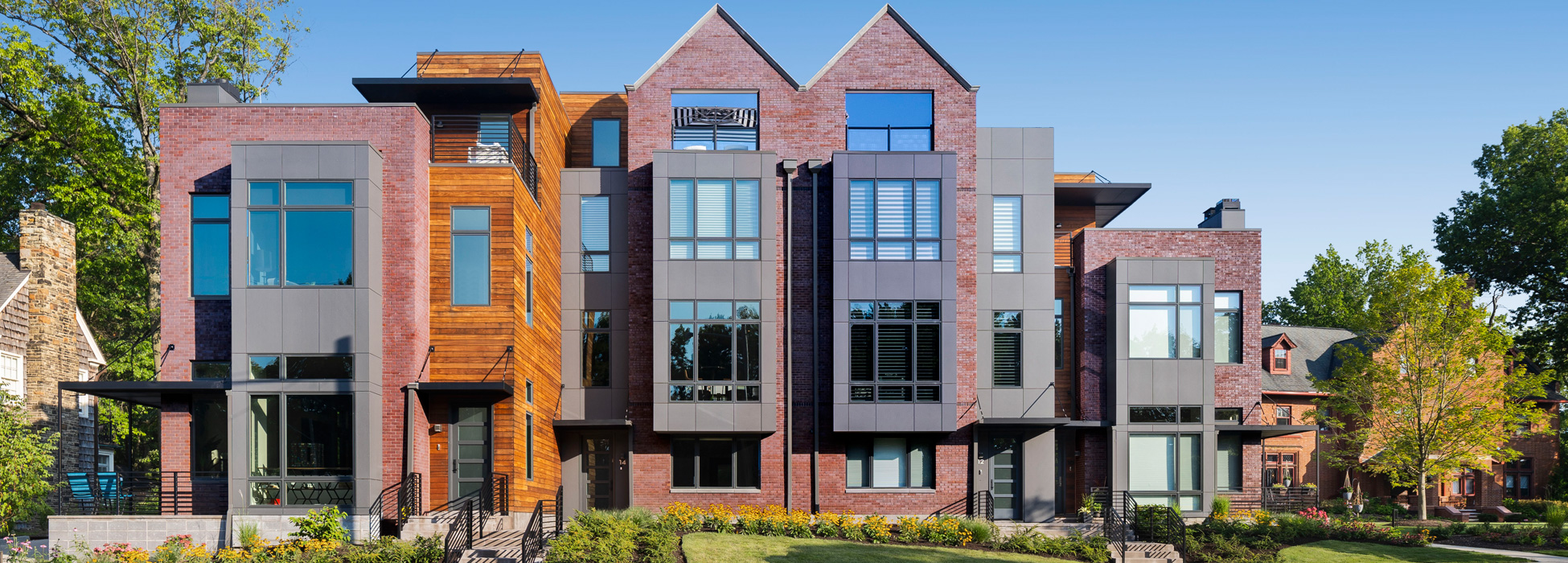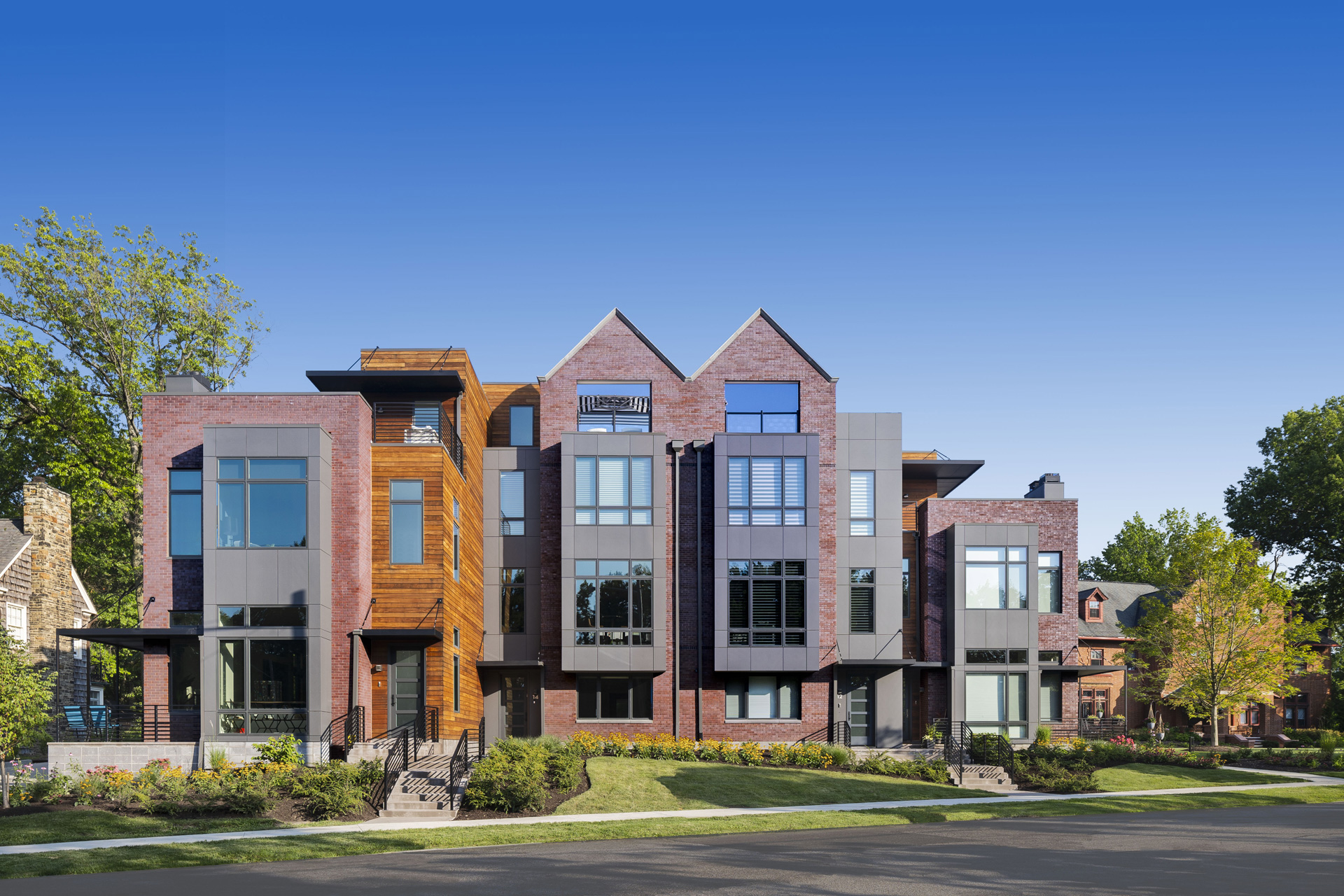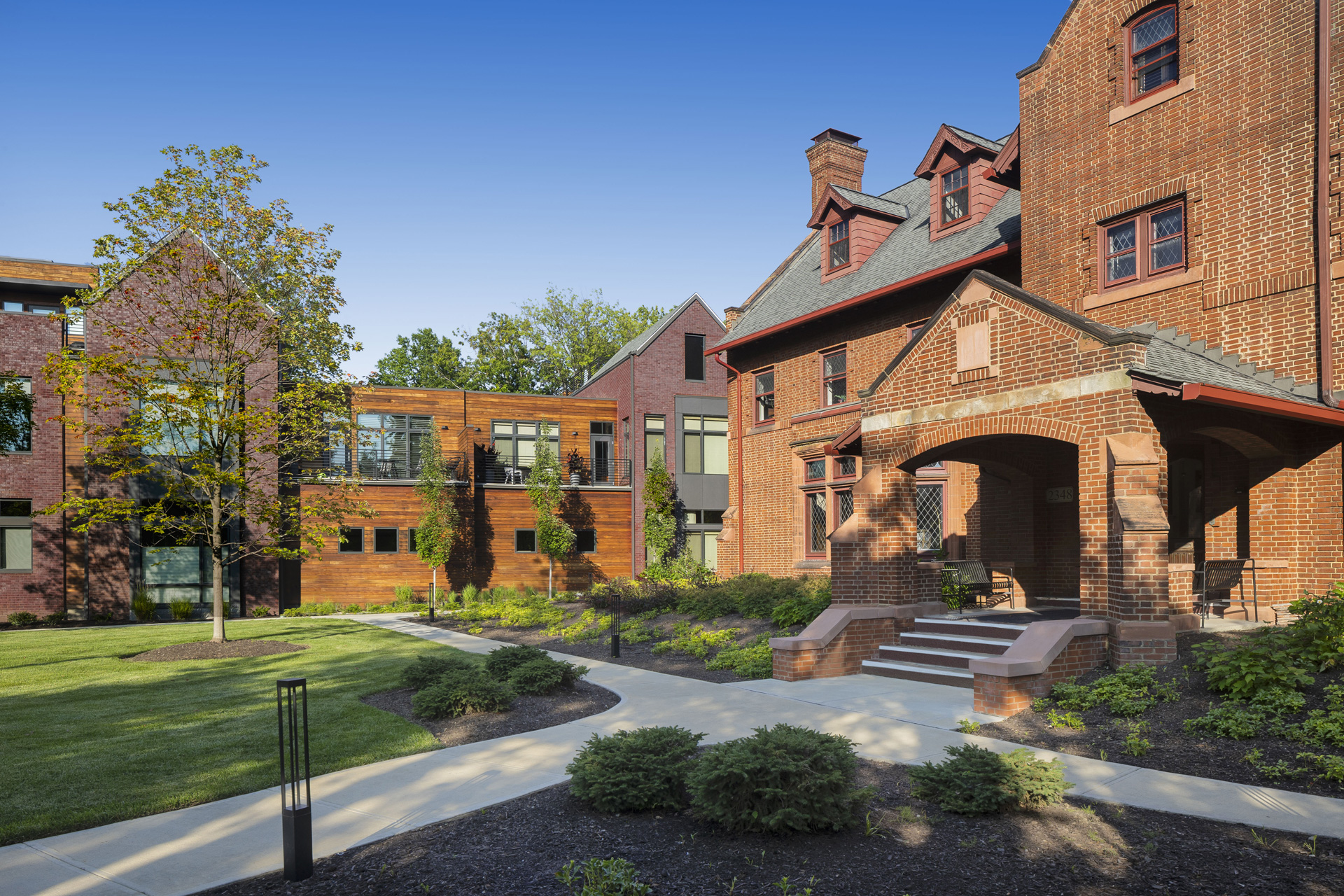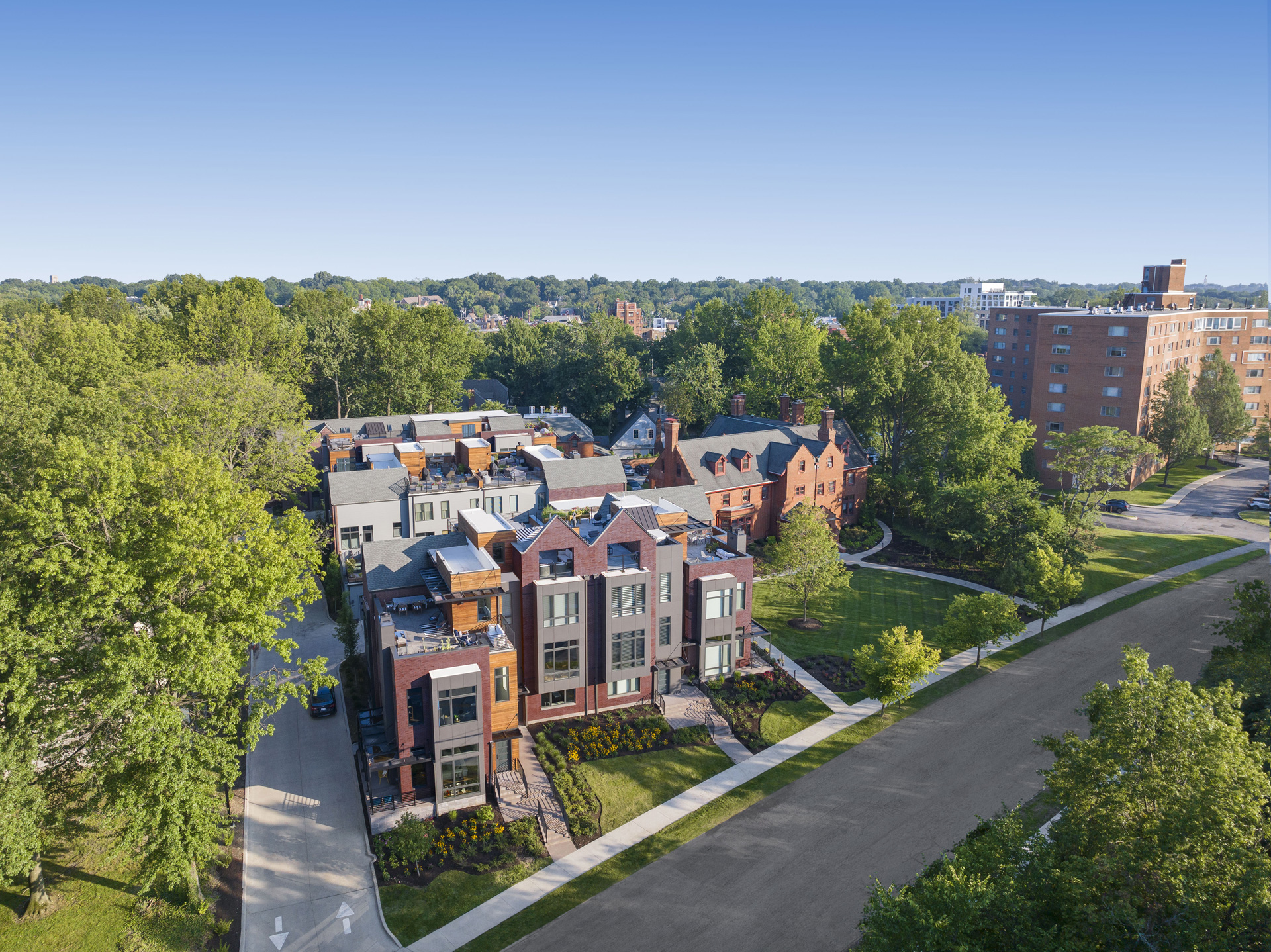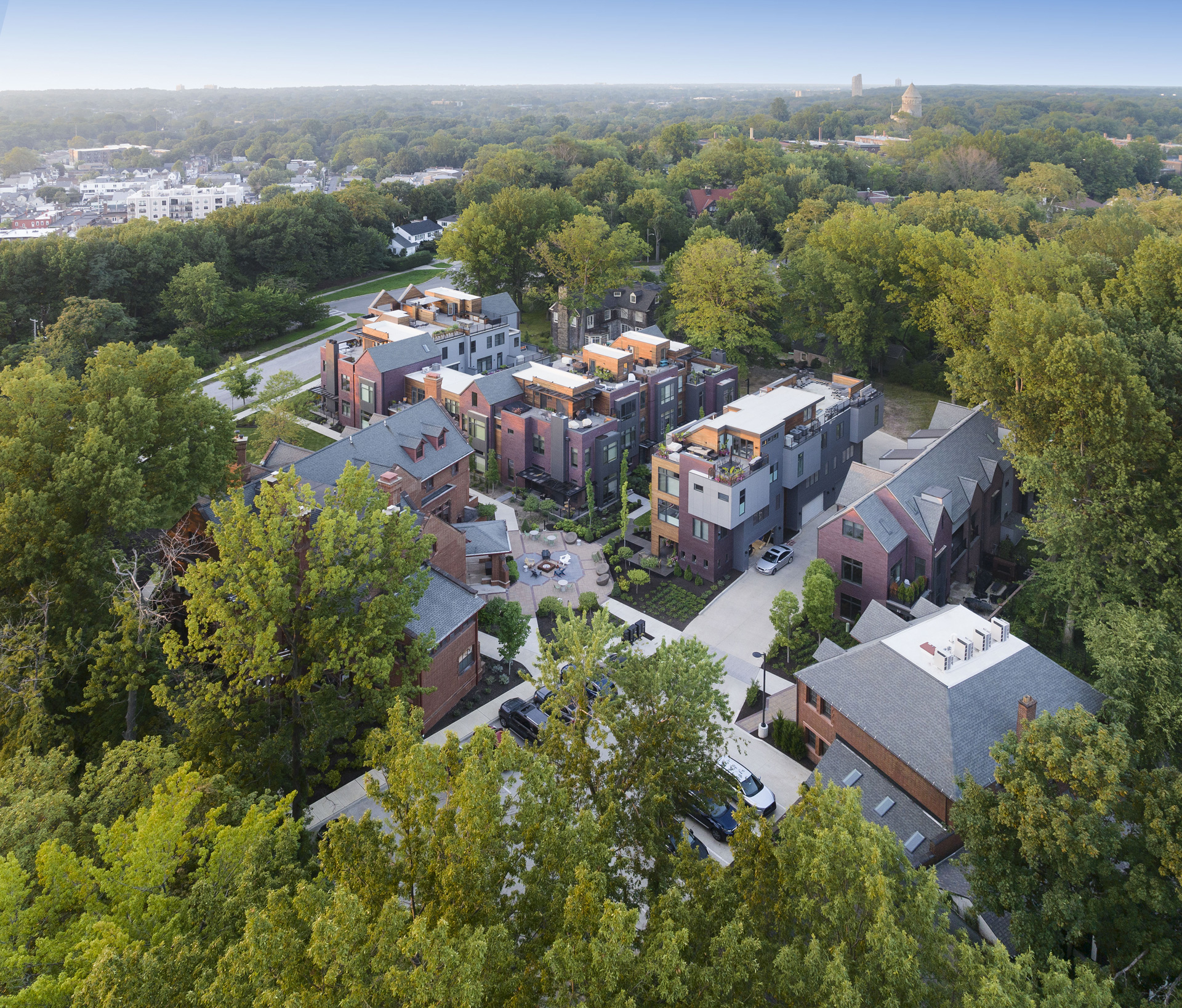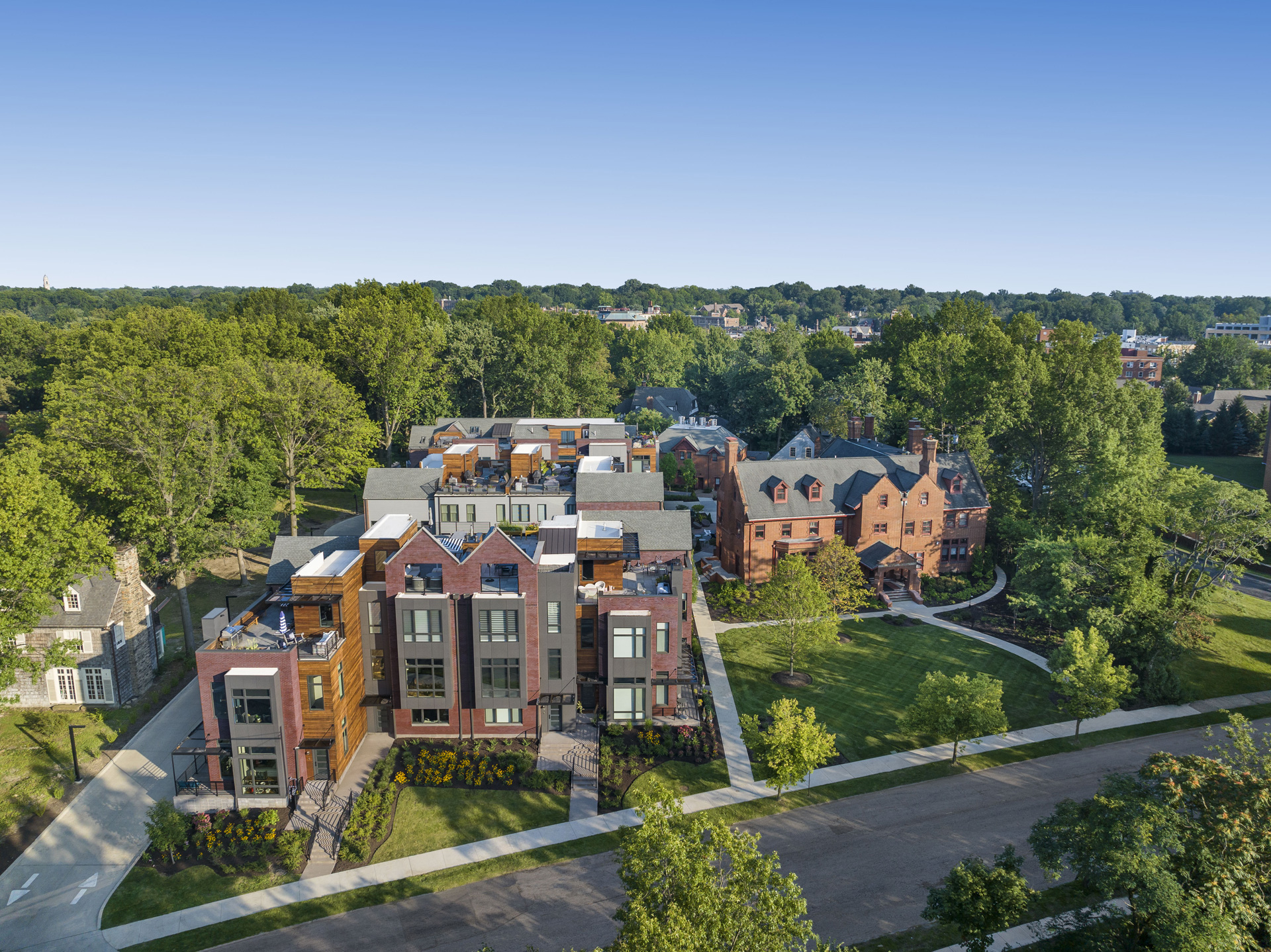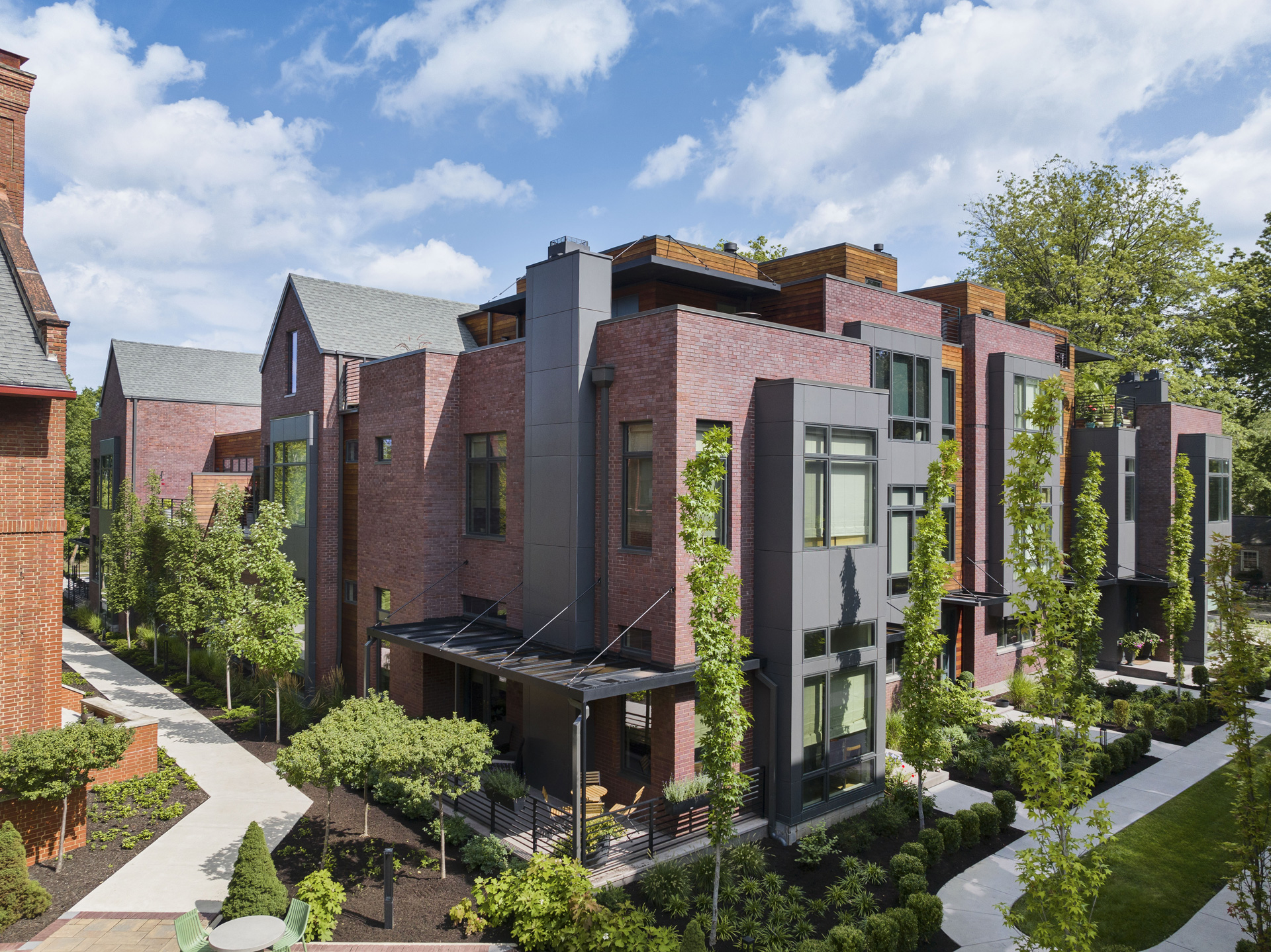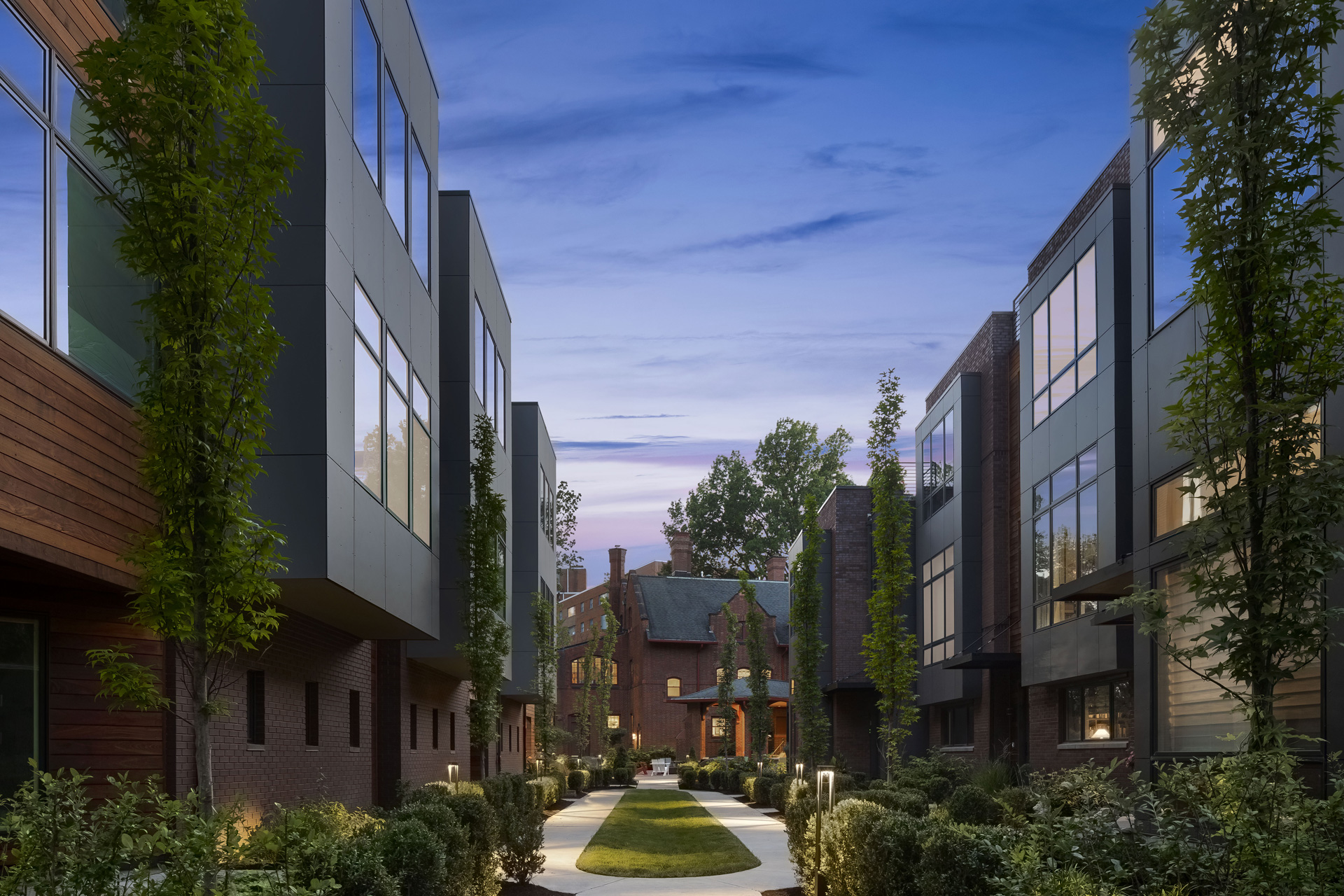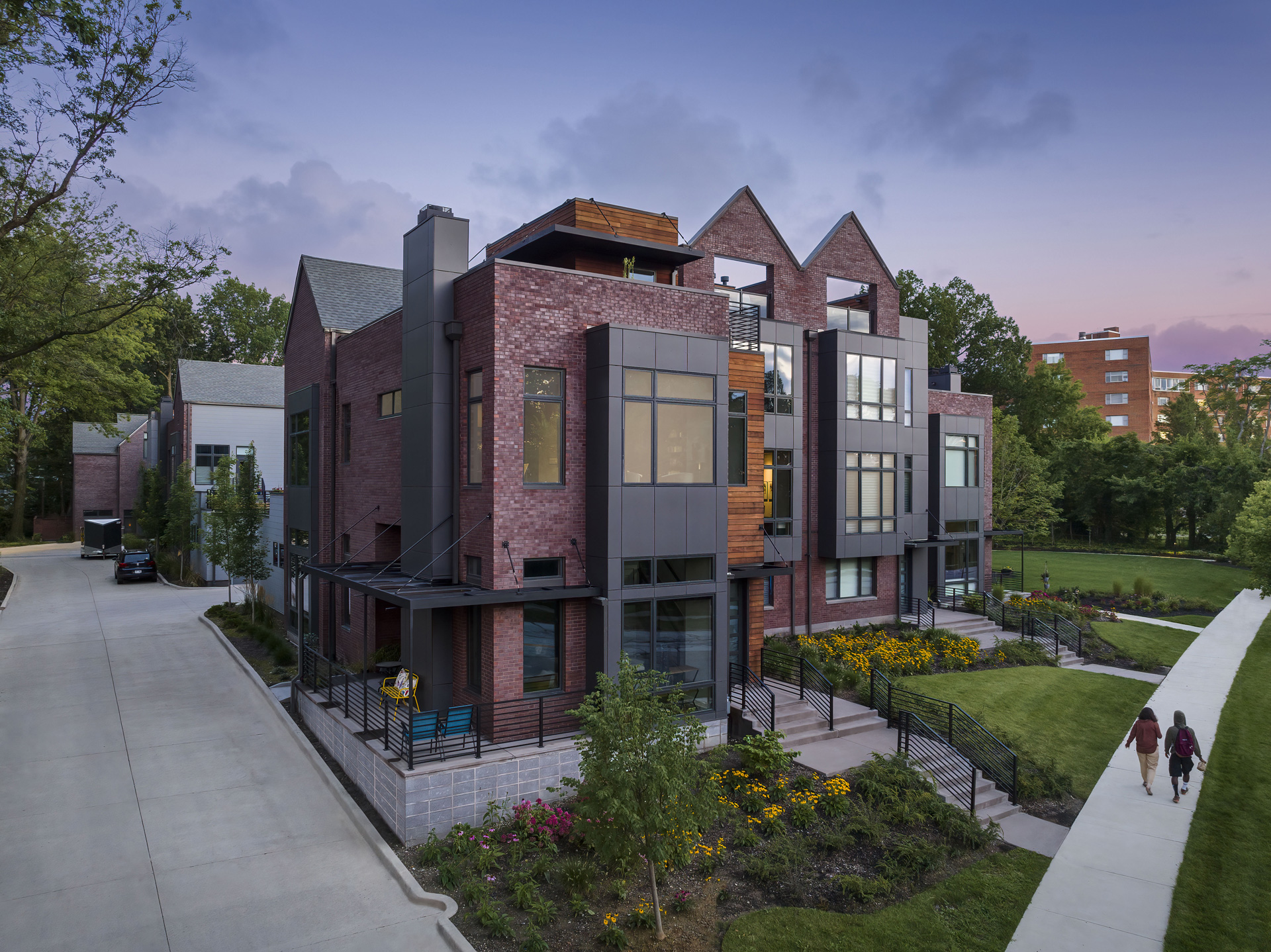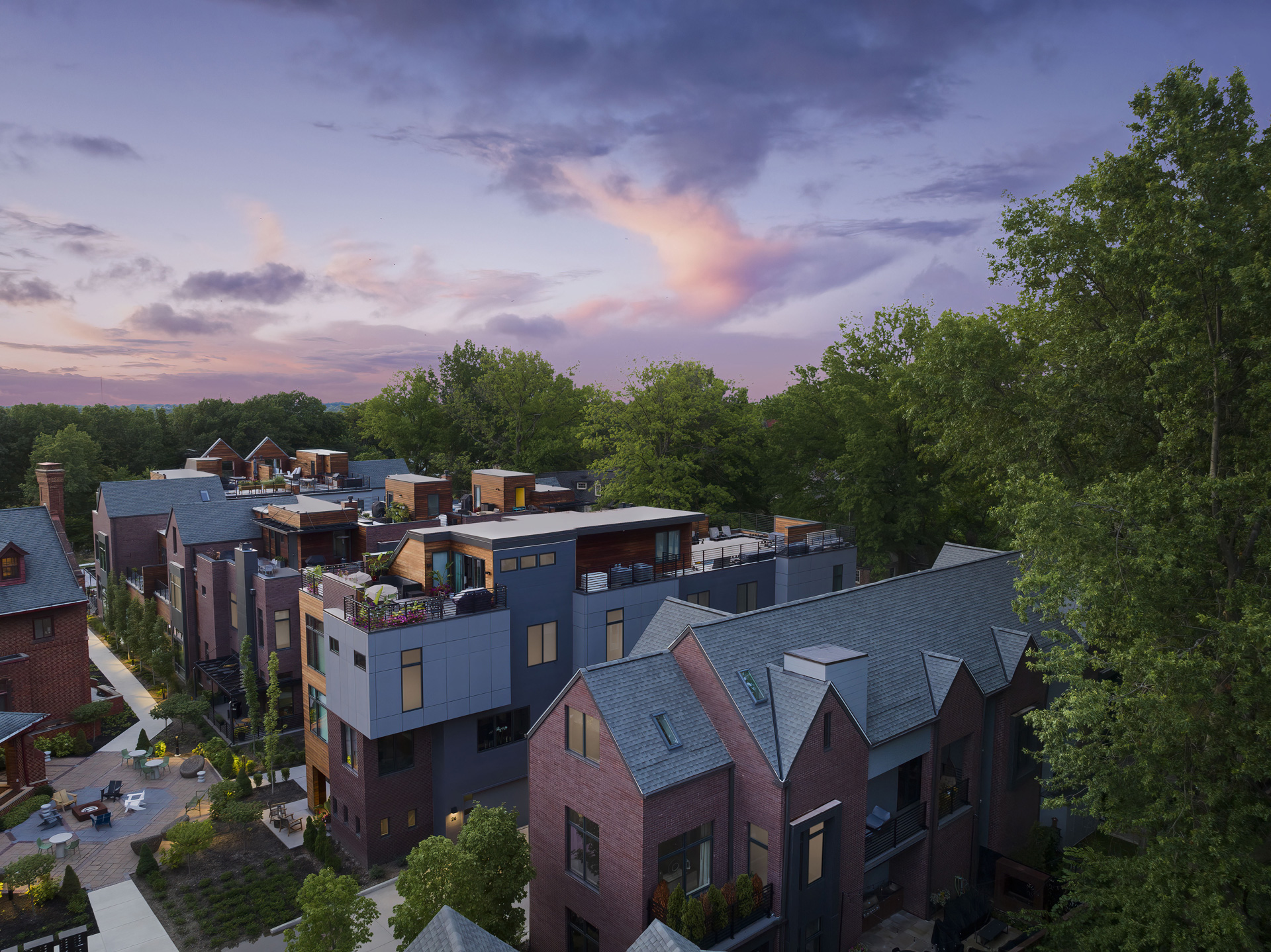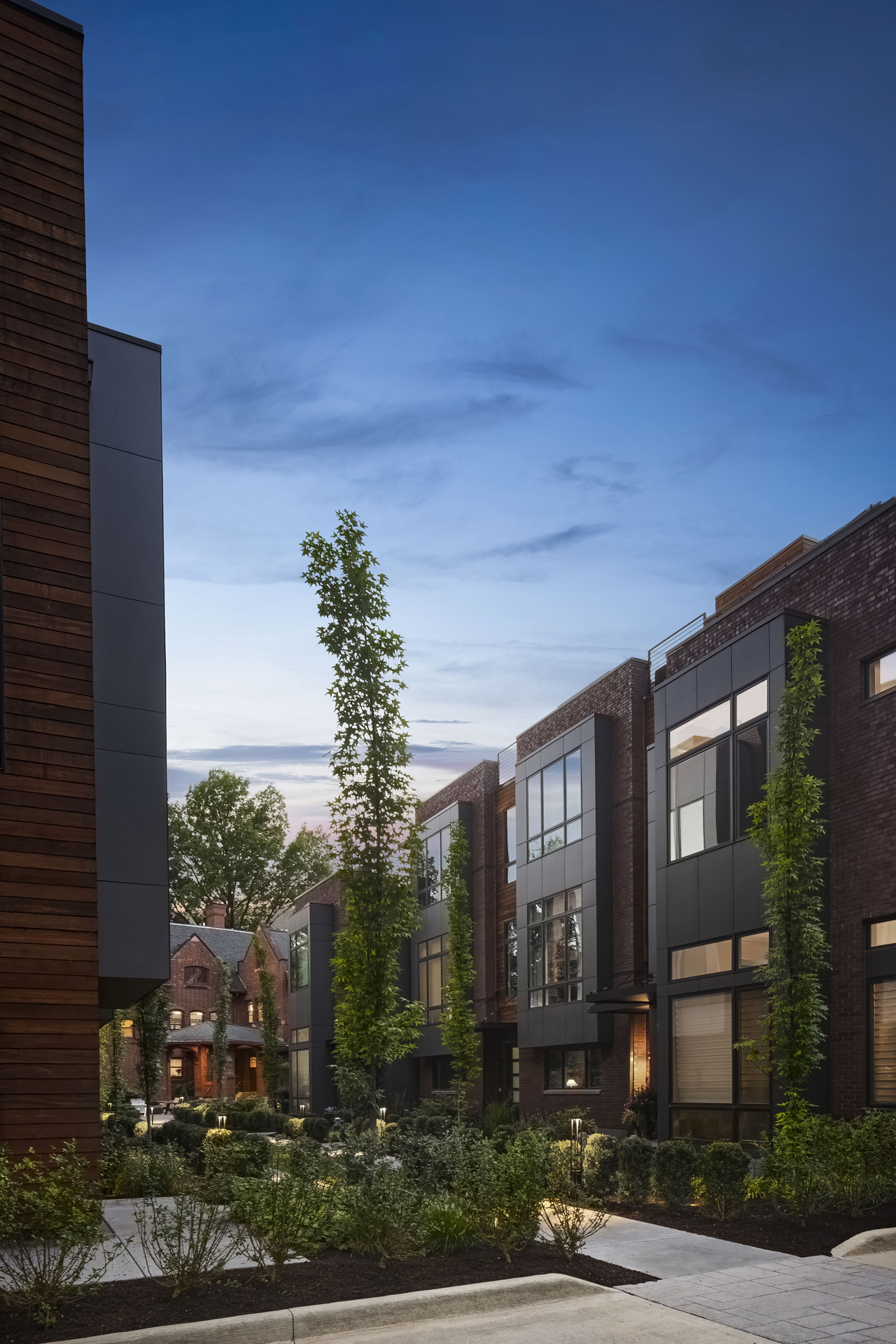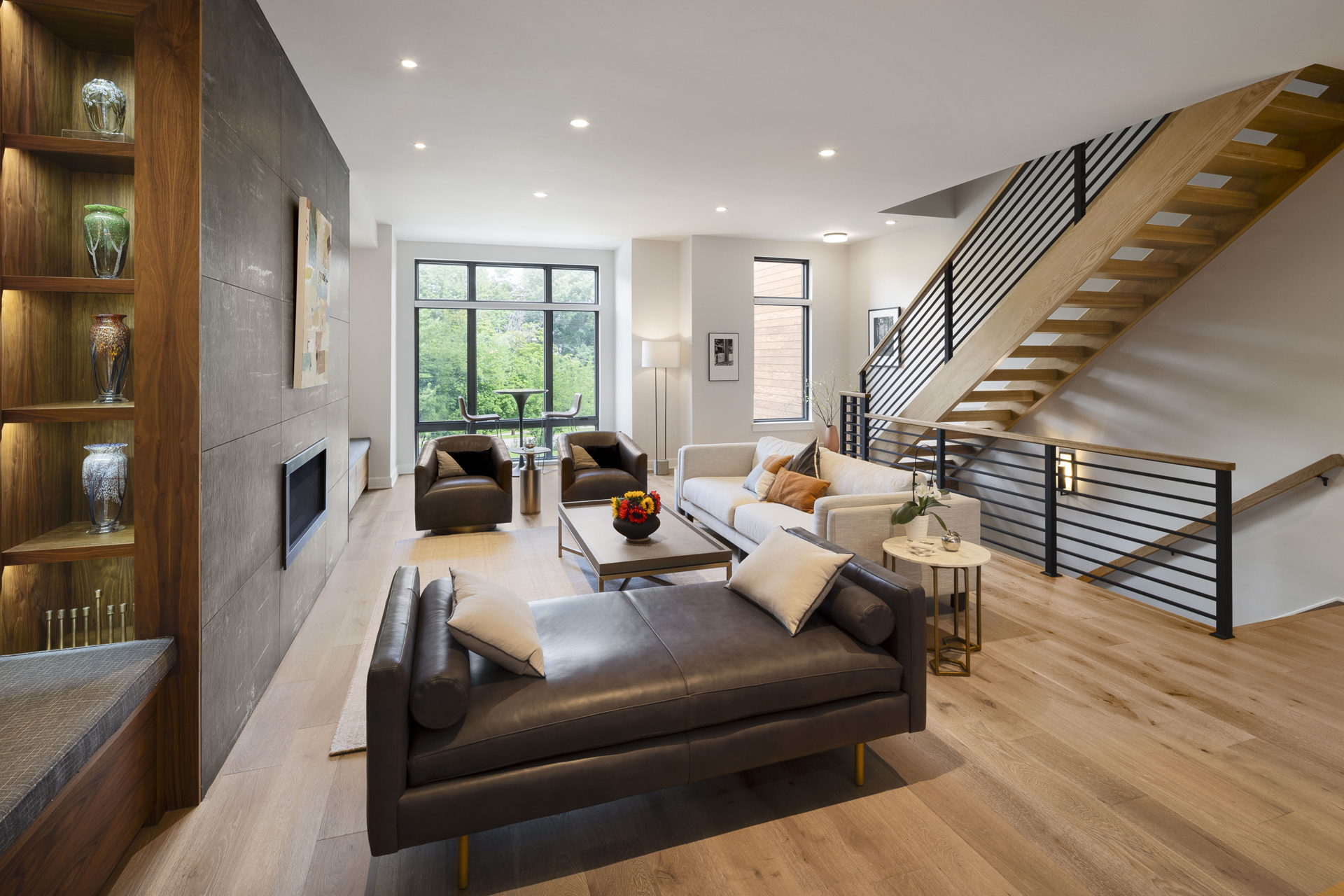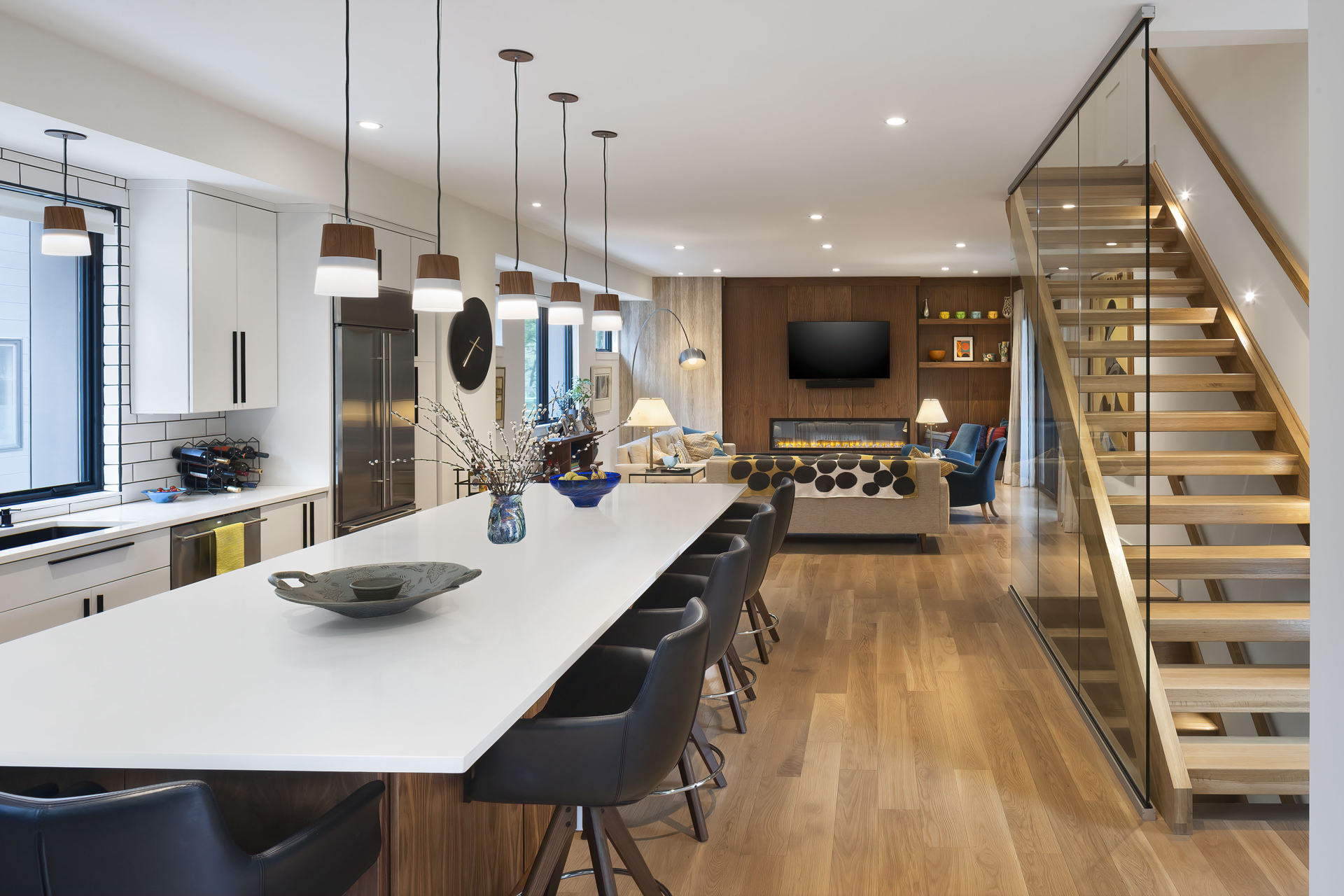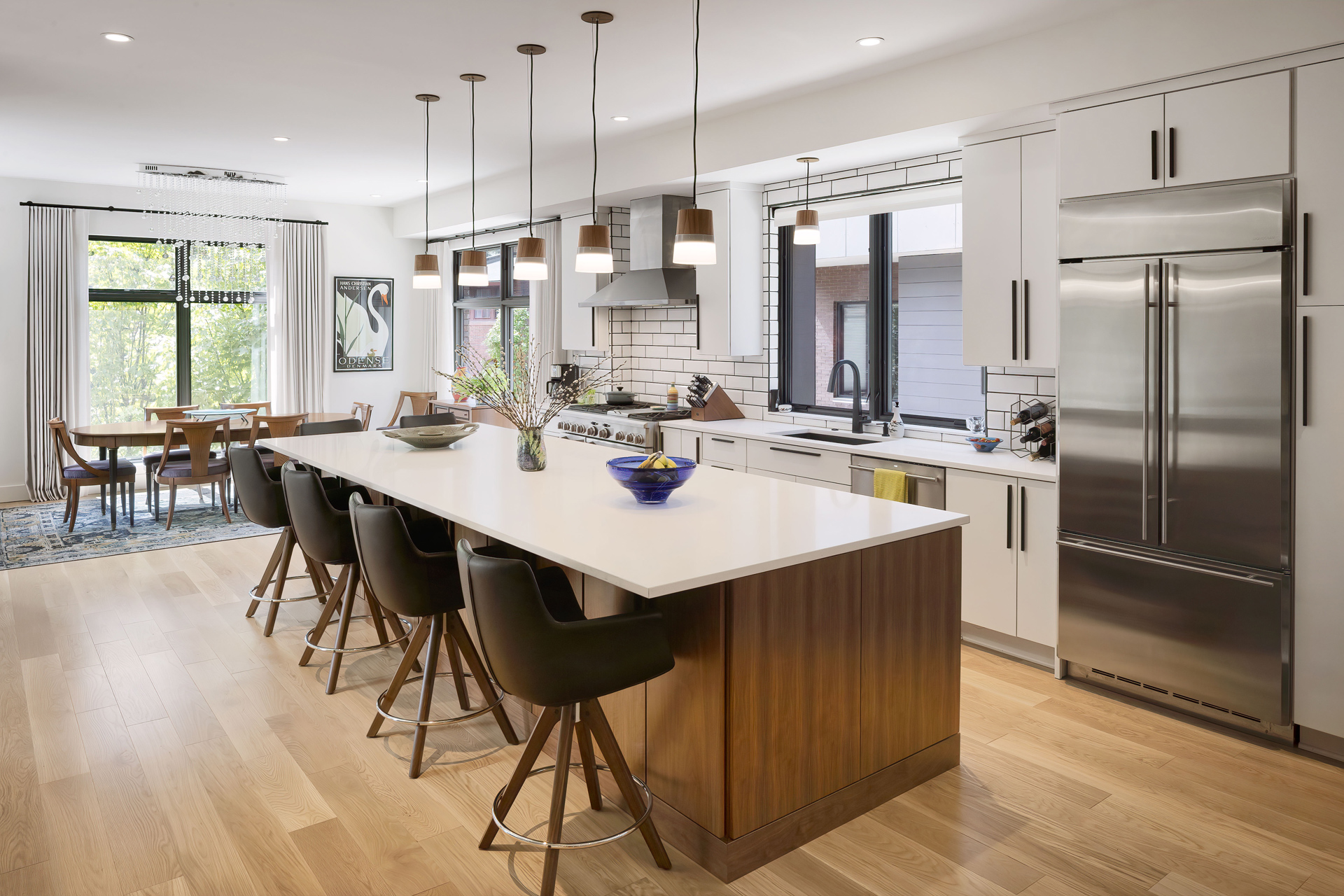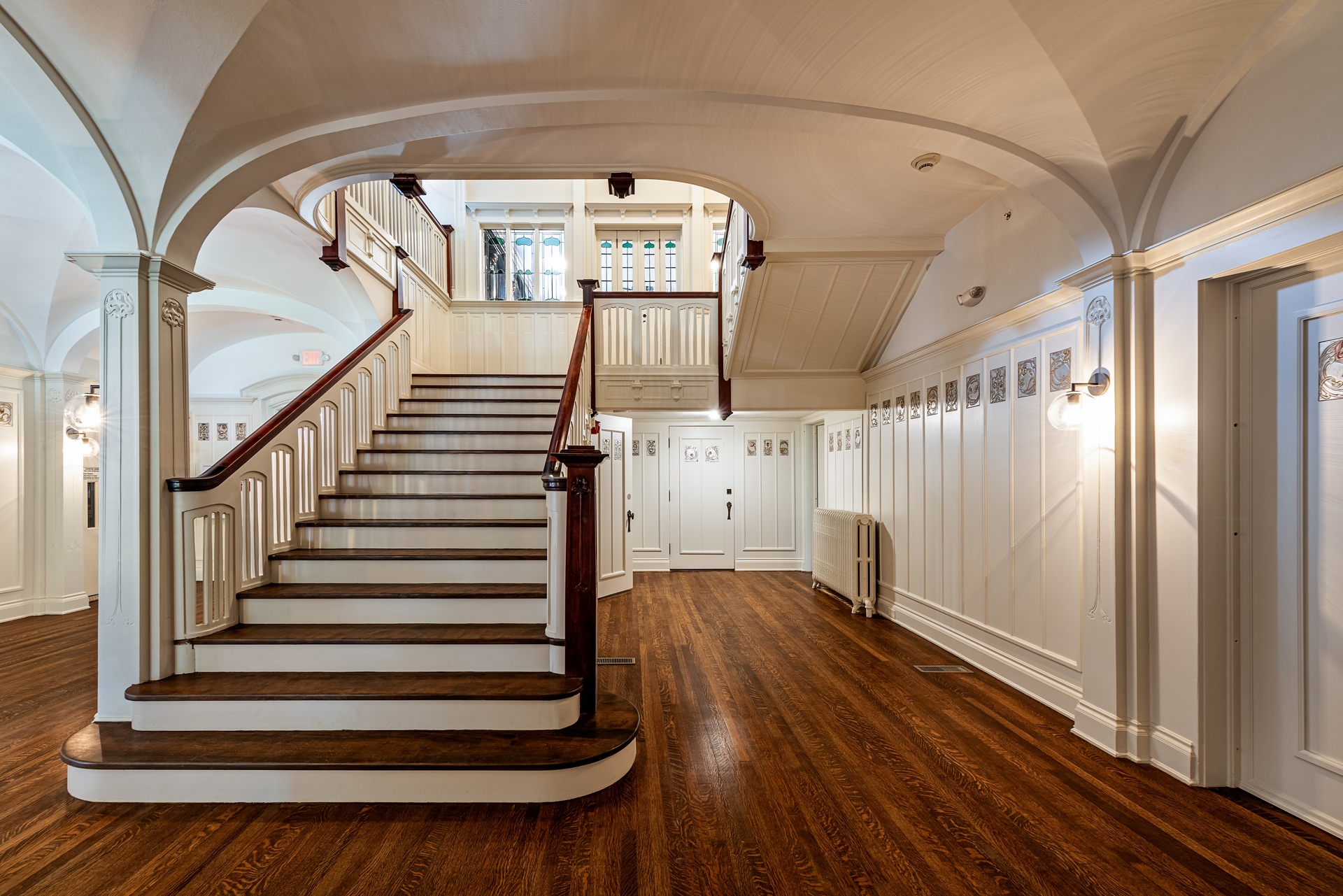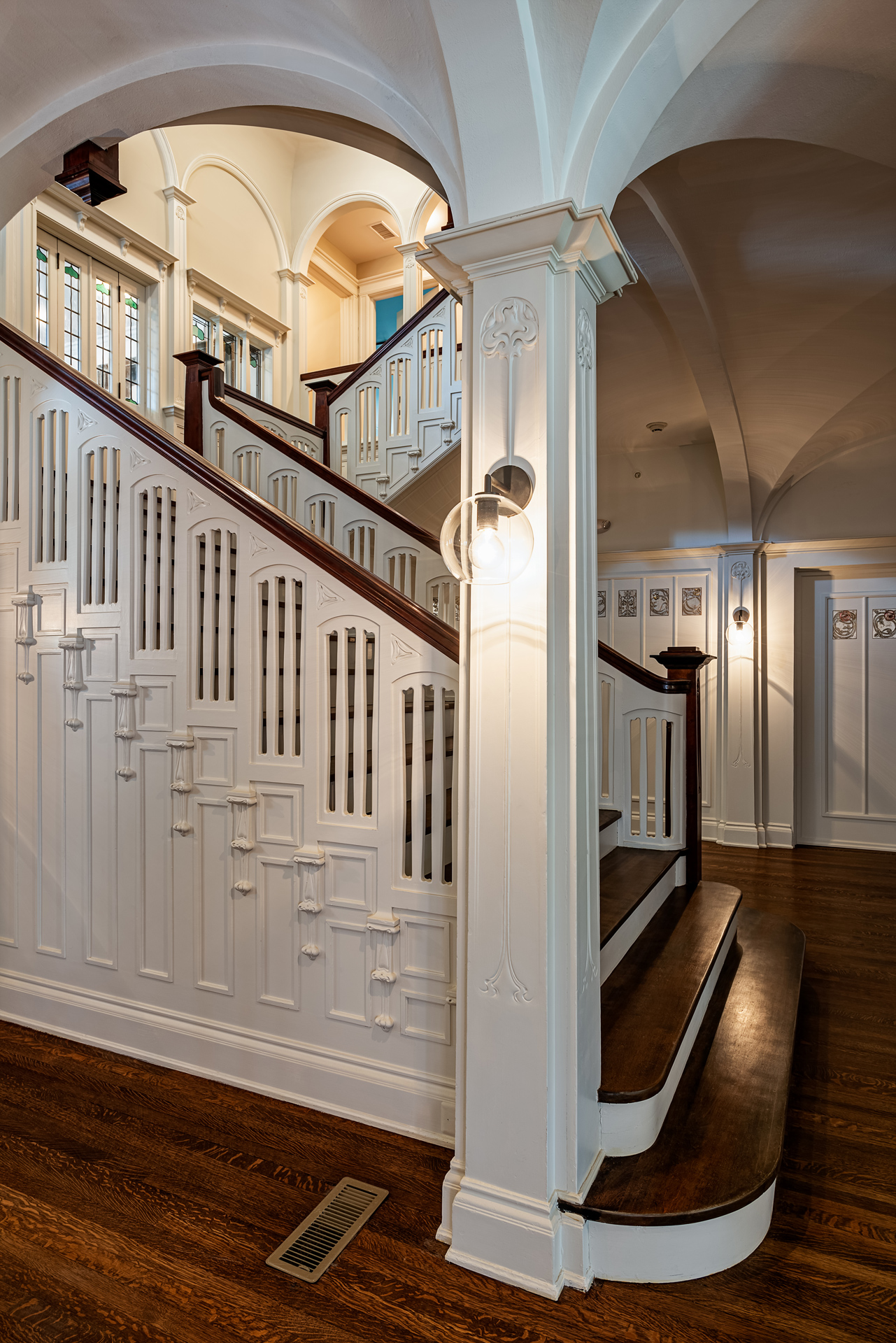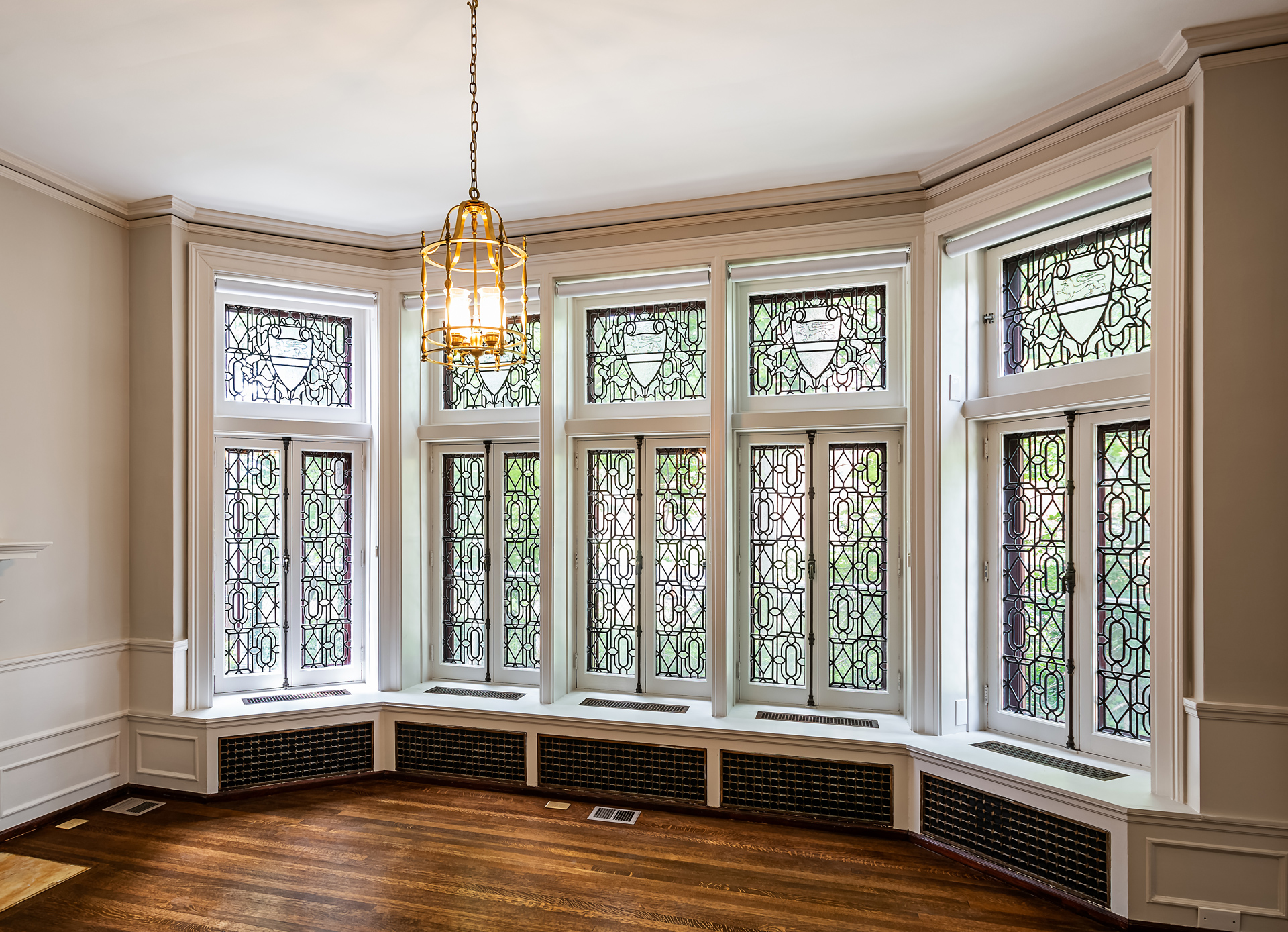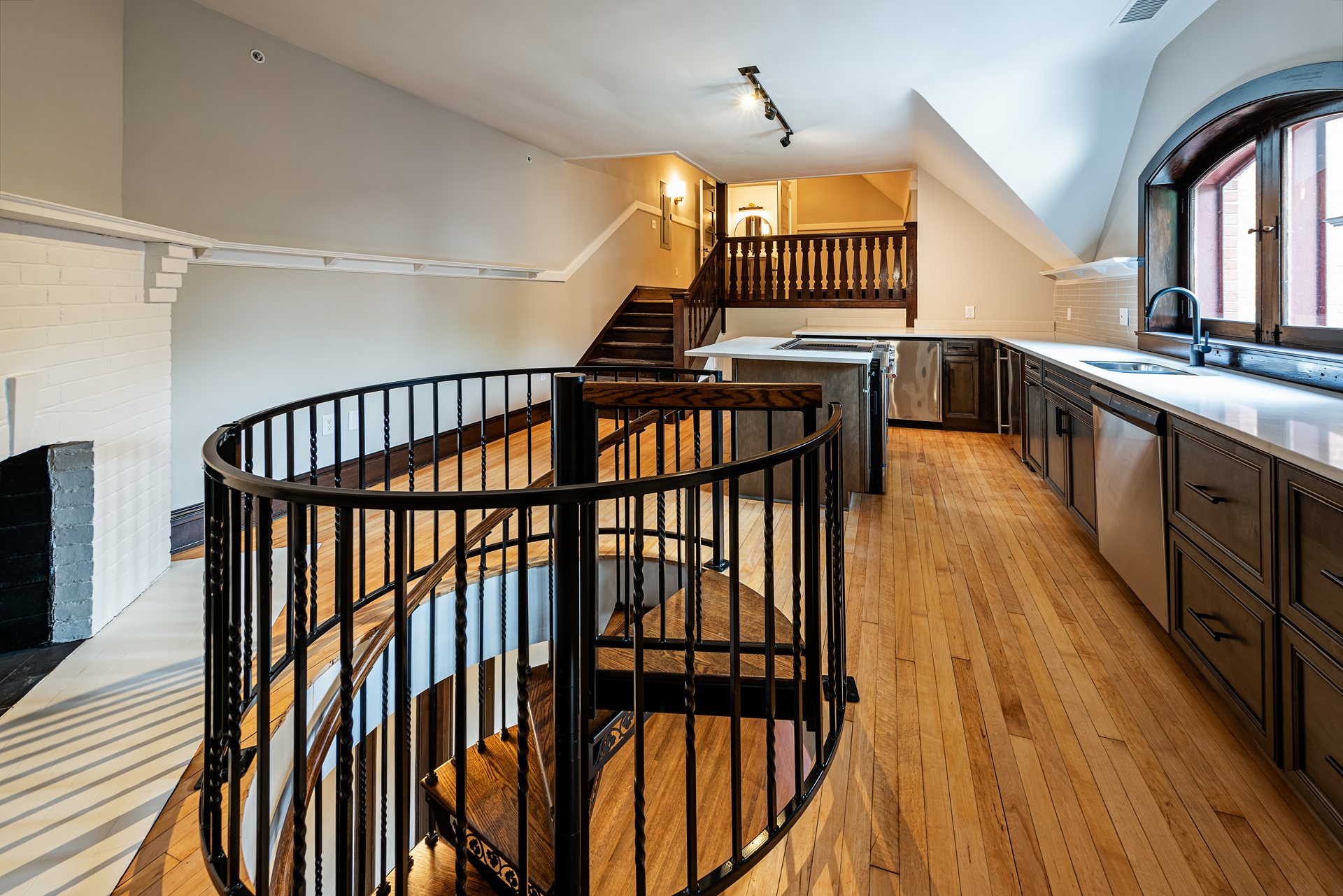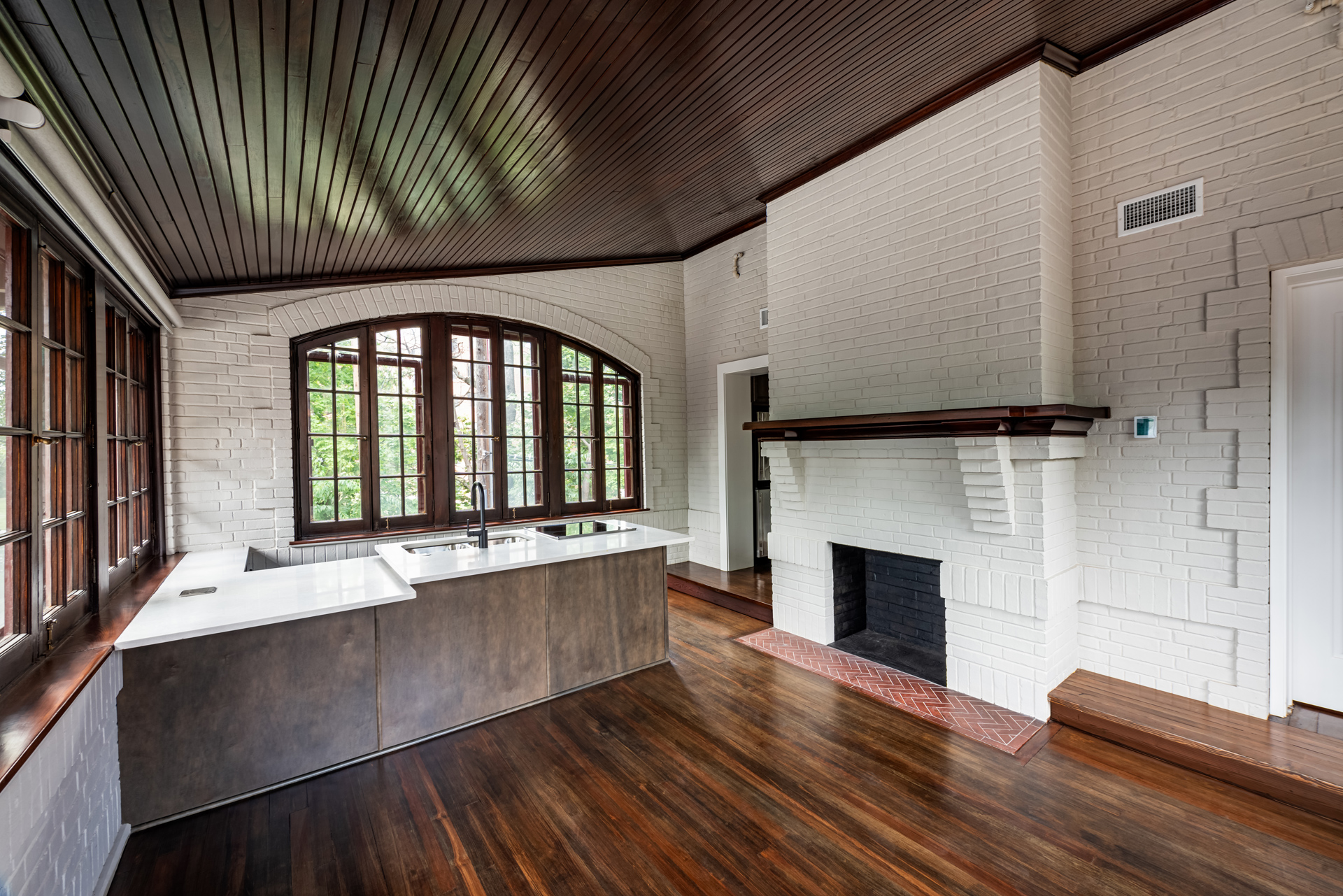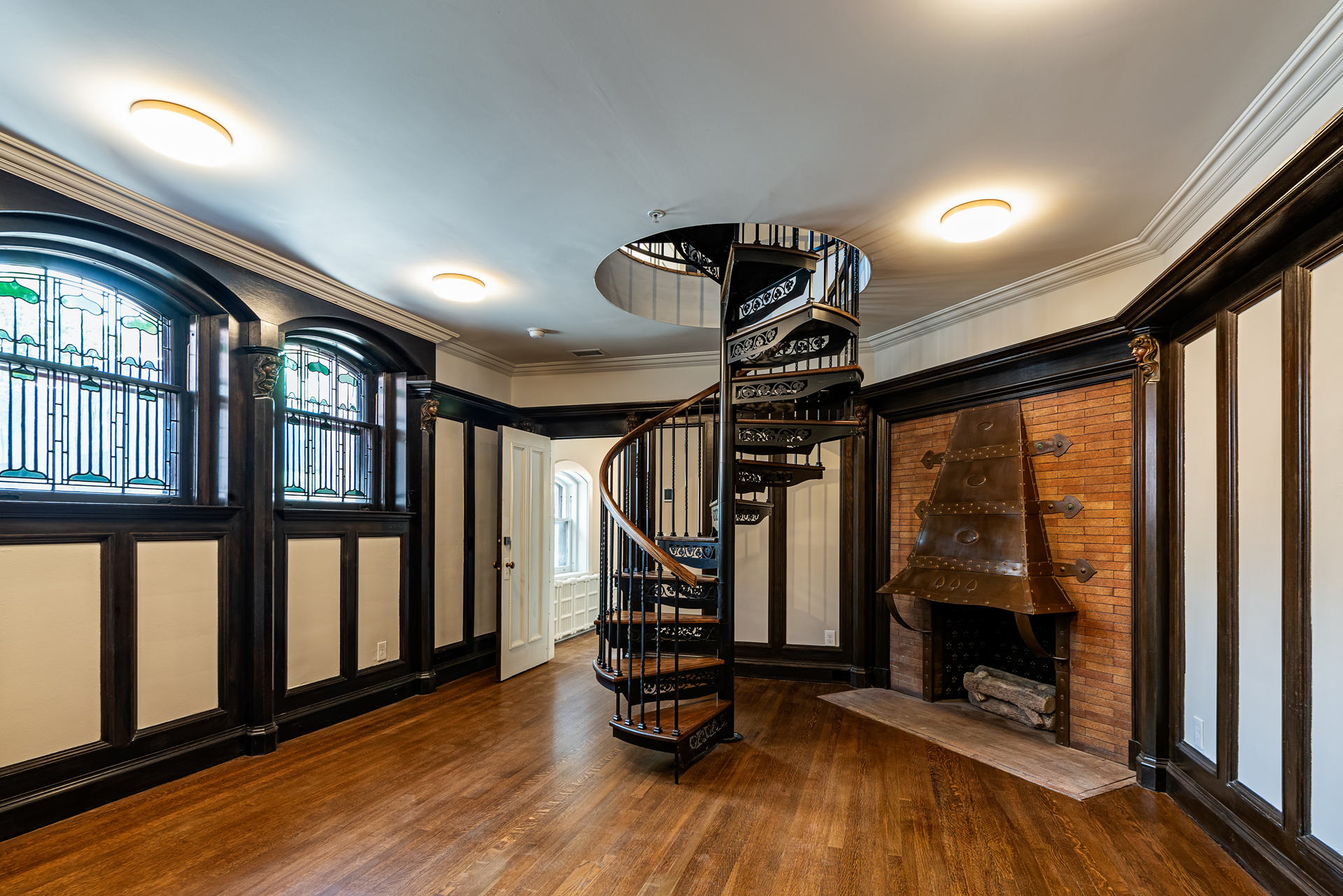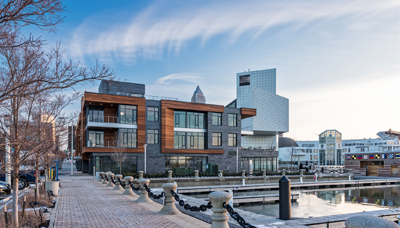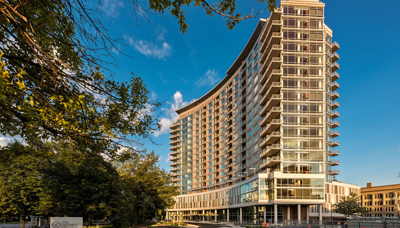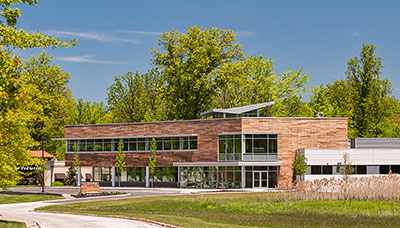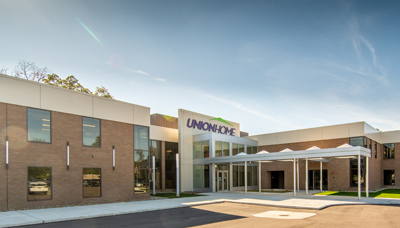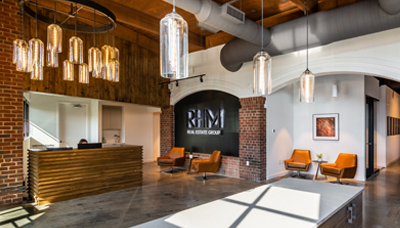The College Club project in Cleveland Heights, Ohio features the adaptive reuse of the historic WDB Alexander Residence, designed in 1903 by the Cleveland architectural firm of Garfield and Meade. The historic mansion and carriage house were restored and converted into thirteen luxury apartments, and complimentary wings of twelve new historically-compatible townhouses were added to the property.
The subject property, consisting of a three-story brick mansion with a detached two-story brick carriage barn, was originally designed as a single-family residence when constructed in 1904. It was purchased in 1951 by the College Club of Cleveland, a women’s philanthropic organization, and used as its headquarters and clubhouse. The property was designated as a Cleveland Heights Landmark in 1978 and is a Contributing Resource in the Euclid Heights Historic District, which is listed in the National Register of Historic Places.
The mansion is rich with Arts and Crafts detail, including leaded art-glass windows at the entrances, vaulted ceilings, wainscoting and doors with metallic glazed inset, and wood panels with carved, stylized Glasgow roses in the manner of Charles Rennie McIntosh. The carriage barn features character-defining features such as painted and stained tongue and groove walls and ceilings which were retained and preserved. During the conversion to apartment use, very little of the historic buildings’ fabric was altered, and most of the historic finishes were rehabilitated, re‐exposed, and preserved throughout. Nine new apartments were created in the mansion, while four apartments were established in the carriage house.
The new historically-compatible townhomes complement the mansion on the property, emulating its traditional elements such as the double gable façade, living room bay window protrusions, windows clustered in threes, large front porches, and the formal landscaped entry approach and re-envisions them in a modern aesthetic with modern building materials and construction techniques.

